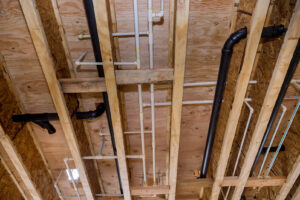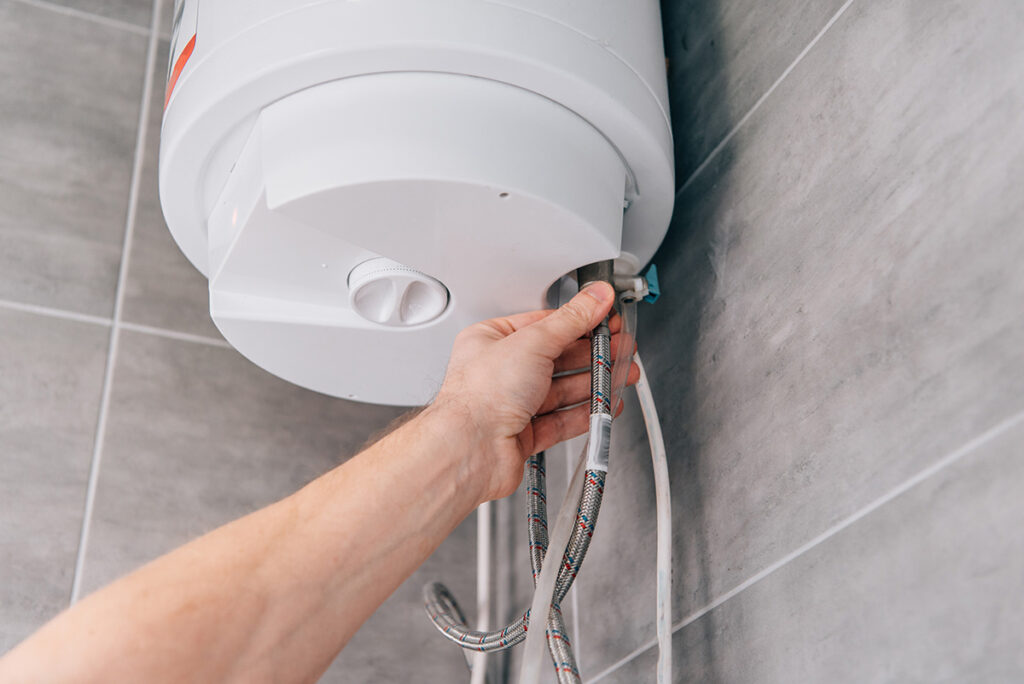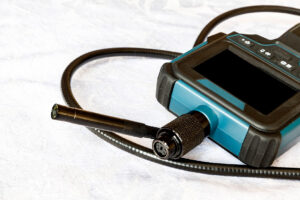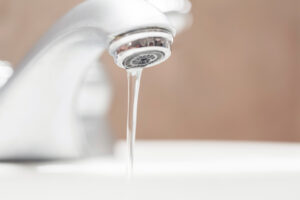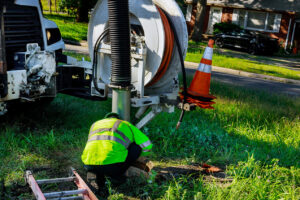Running out of hot water can be a major daily inconvenience. Many households experience an insufficient hot water supply due to issues with the water heater’s performance. In this article, we explore the common causes of rapid hot water depletion, provide troubleshooting steps, offer maintenance tips to prevent these issues, and discuss methods to increase your hot water supply. Understanding factors such as sediment buildup, faulty heating elements, and thermostat errors can help you maintain an efficient water heating system. We also highlight signs that your water heater may be nearing failure, so you know when to consult a professional plumbing service. With practical advice and technical insights, you can conserve energy, reduce water waste, and save money on repairs while promoting sustainable living practices. Let’s examine the causes, troubleshooting methods, and solutions for hot water shortages.
Transitioning now to the main discussion, we review the common causes of your hot water running out quickly.
What Are the Most Common Causes of Running Out of Hot Water Quickly?
Hot water shortages are typically caused by sediment buildup, faulty heating elements, thermostat malfunctions, broken dip tubes, leaks, or a water heater that is too small. Each issue reduces the efficiency of the heater, leading to a shorter duration of hot water.
How Does Sediment Buildup Affect Hot Water Supply?
Over time, mineral deposits such as calcium and lime accumulate inside the tank, insulating the heating elements. This slows heat transfer and forces the heater to work harder, resulting in uneven and slower heating. Reduced water temperatures and unusual noises are common signs. Regularly flushing the heater removes sediment and restores efficiency.
What Are the Signs of a Faulty Heating Element?
A malfunctioning heating element may prevent water from reaching the desired temperature or heat it too slowly. Indicators include inconsistent temperatures, longer wait times, and a decreased volume of hot water. A visual inspection or professional testing can confirm the defect, and replacing the element can restore normal performance.
How Can Thermostat Problems Cause Insufficient Hot Water?
An incorrectly set or defective thermostat may misread water temperature, failing to trigger the heating element correctly. This can cause water to remain too cool or result in premature heater shutdown. Overworking the element further reduces hot water supply. Regular testing and calibration of the thermostat ensure an optimal, consistent temperature.
Why Does a Broken Dip Tube Lead to Hot Water Shortages?
The dip tube directs incoming cold water to the bottom of the tank for efficient heating. If damaged, cold water can mix with hot water at the top, diluting the temperature and causing rapid depletion. Repairing or replacing the dip tube restores proper stratification, ensuring that hot water remains available at the tap for longer.
How Do Leaks Reduce Hot Water Availability?
Leaks in the heater or associated plumbing reduce the volume of hot water by allowing water to escape and by causing heat loss. Common leak sources include deteriorating seals, corroded pipes, or damage to the tank. Detecting leaks early is crucial to prevent further water damage and maintain system efficiency.
Can Water Heater Size Cause Hot Water to Run Out Quickly?
A water heater that is too small for a household’s needs will run out of hot water more quickly, especially during periods of high demand. Households with larger families or multiple bathrooms may need a larger tank or a modern tankless water heater to properly meet their requirements. Matching your heater’s capacity to your consumption is essential.
How Can You Troubleshoot Hot Water Issues Step-by-Step?
A systematic troubleshooting approach can help pinpoint the root cause of hot water shortages. Here are several steps to follow:
What Is the First Step in Checking Your Water Heater’s Power Supply?
Begin by ensuring that the water heater is receiving power. For electric heaters, check the circuit breaker and fuses. For gas heaters, verify that the pilot light is on and that the gas valve is open. Confirming proper power supply is the foundation before moving on to further tests.
How Do You Test and Adjust the Thermostat?
Measure the outlet water temperature with a reliable thermometer. If the temperature is lower than expected, inspect the thermostat for proper functionality. Adjust the setting to a higher value and observe for changes. If no improvement occurs, the thermostat may be faulty or miscalibrated and require professional attention or replacement.
How Can You Inspect and Test the Heating Element?
For safety, turn off the power or gas to the heater before inspecting the heating element. Remove the access panel and visually check for signs of damage such as corrosion or burn marks. Use a multimeter to measure the resistance; abnormal readings indicate a faulty element. Replacing a defective heating element can significantly improve water heating performance.
What Are the Signs of Leaks and How Do You Detect Them?
Inspect the area surrounding the heater for moisture, puddling, or corrosion. Leaks might occur at valve connections or the base of the unit. A simple water meter test—turning off all fixtures and monitoring the meter—can also reveal leaks. Timely repairs, such as tightening connections or replacing seals, are important to maintain both hot water supply and system integrity.
How Do You Flush a Water Heater to Remove Sediment?
Periodically flushing the water heater is key to removing sediment buildup. Turn off the heater’s power or gas, attach a garden hose to the drain valve, and open it to let out water mixed with sediment until clear water flows. After flushing, close the valve and refill the tank. This process improves heat transfer and extends the hot water supply.
What Maintenance Tips Help Prevent Running Out of Hot Water?
Regular maintenance is essential to prolong the life of your water heater and avoid hot water shortages. Consistent upkeep helps mitigate many common issues.
Why Is Flushing Your Water Heater Annually Important?
An annual flush removes accumulated sediment that not only reduces efficiency but can also lead to component damage or premature failure. Regular flushing keeps the system clean, helps maintain optimal performance, and extends the lifespan of the heater, potentially reducing repair costs over time.
How Do You Test the Temperature and Pressure (T&P) Valve?
The T&P valve is a crucial safety feature that releases water if pressure or temperature gets too high. Test it by lifting the lever briefly and ensuring water flows out and then stops when released. Regular testing and replacement if necessary help maintain safe operating conditions and prevent further hot water issues.
What Is the Role of the Anode Rod and How Do You Inspect It?
The anode rod protects the tank from corrosion by attracting corrosive elements. Over time, the rod deteriorates and must be inspected by turning off the heater, draining a portion of the water, and examining the rod. Replacement is recommended when more than half of the rod is corroded, ensuring continued protection and preventing leaks.
When Should You Schedule Professional Water Heater Maintenance?
Professional maintenance should be scheduled annually or when you notice signs of diminished performance, such as inconsistent temperatures, unusual sounds, or leaks. A professional inspection can reveal issues before they become major problems, prolonging the heater’s life and ensuring optimal operation.
How Can You Increase Your Hot Water Supply Effectively?
When maintenance and troubleshooting don’t fully resolve the issue, there are ways to boost your hot water supply.
When Is It Time to Upgrade to a Larger Water Heater?
If your current heater is too small to meet your household’s demand—even after troubleshooting and maintenance—it may be time for an upgrade. Larger tanks offer a greater reservoir of hot water, while newer tankless systems provide on-demand hot water regardless of usage peaks. Assess your household’s consumption patterns to determine if an upgrade is necessary.
What Are the Benefits of Installing a Tankless Water Heater?
Tankless water heaters heat water only when needed, offering an endless supply without the limitations of stored hot water. Benefits include energy efficiency, space savings, and the elimination of standby heat loss. Though the initial cost may be higher, the long-term savings and convenience make tankless systems an attractive option for many households.
How Should You Adjust the Thermostat to Maximize Hot Water?
Proper thermostat adjustment is critical. A setting that is too high wastes energy and poses a scalding risk, while too low a setting fails to provide sufficient heat. The optimal range is typically between 120°F and 140°F. Regular checks and recalibrations ensure the water heater operates within this range, maximizing both safety and performance.
What Are Practical Ways to Reduce Hot Water Usage?
Conserving hot water not only extends supply but also reduces energy consumption. Install low-flow showerheads, promptly repair leaks, and insulate hot water pipes to minimize heat loss. Additionally, reducing shower time and using cold water for laundry or rinsing can contribute significantly to conservation efforts. These water-saving habits promote efficiency and sustainability, lowering utility bills and preserving resources.
What Are the Signs Your Water Heater Is Failing and Needs Repair or Replacement?
Early detection of a failing water heater can prevent sudden disruptions. Common warning signs indicate that professional repair or replacement may soon be necessary.
How Long Should a Water Heater Last Under Normal Use?
A typical well-maintained water heater lasts between 8 to 12 years. Factors like water quality, usage frequency, and maintenance routines impact its lifespan. Knowing the age and condition of your unit helps determine when an upgrade might be more economical than facing constant repairs.
What Are Common Symptoms of a Failing Water Heater?
Symptoms of a failing heater include inconsistent water temperatures, reduced hot water supply, unusual noises, leaks, and discolored or rusty water. Any of these indicators suggest that important internal components may be deteriorating, and early intervention can prevent a complete failure.
How Much Does It Typically Cost to Fix or Replace a Water Heater?
Minor repairs, such as replacing a heating element or thermostat, can cost between $150 and $300. However, if multiple components have failed or the tank is severely corroded, replacement costs can range from $1,000 to $3,000. In many cases, investing in a new, energy-efficient model can offer long-term savings despite the higher upfront cost.
When Should You Contact a Professional Plumbing Service?
If you experience consistent problems—such as recurring leaks, irregular heating, or other persistent issues—it’s wise to call a professional. Experts can perform a thorough diagnostic, safely execute repairs, and advise whether replacing the unit is the most cost-effective option. Early professional intervention can prevent further damage and ensure your hot water supply remains uninterrupted.
How Does Reliable Home Services Help Solve Hot Water Problems?
Reliable home services offer comprehensive solutions for hot water issues. They provide diagnosis, repair, and preventive maintenance to ensure your home has a steady supply of hot water.
What Expert Diagnosis Services Are Offered for Hot Water Issues?
Professionals use advanced diagnostic tools to check for sediment buildup, faulty heating elements, thermostat errors, and leaks. A thorough inspection ensures that no underlying issues are missed, allowing for accurate and targeted repairs.
How Does Professional Repair Restore Hot Water Supply?
Expert repair services address problems by replacing defective components, flushing sediment, or recalibrating controls like the thermostat. This comprehensive approach not only restores hot water supply but also improves overall system efficiency and prolongs the unit’s lifespan.
What Maintenance Plans Prevent Future Hot Water Problems?
Many service providers offer scheduled maintenance plans that include regular check-ups, performance tests, and preventive inspections. These plans help detect early signs of failure—such as scale buildup or worn components—before they become major issues, lowering emergency repair costs and extending the warranty of your unit.
How Can You Schedule Water Heater Installation or Replacement?
Scheduling installation or replacement is straightforward. A consultation is followed by an on-site evaluation where your household’s hot water needs are assessed. A customized proposal is then provided, outlining costs and expected benefits, ensuring you receive a system that meets both your current and future demands.
Table: Comparison of Water Heater Maintenance and Upgrade Options
Before final recommendations, consider this table summarizing key tasks and upgrade options:
Option | Key Function | Typical Cost Range | Long-Term Benefit | Recommended Frequency |
Annual Flushing | Removes sediment buildup | $100 – $200 | Maintains efficiency, prolongs life | Once per year |
Heating Element Replacement | Restores effective water heating | $150 – $300 | Improves heating speed | As needed, based on inspection |
Thermostat Calibration/Replacement | Ensures accurate temperature | $75 – $150 | Optimizes water temperature | Annually or repair event |
Anode Rod Inspection/Replacement | Prevents tank corrosion | $50 – $100 | Extends tank lifespan | Every 1-2 years |
Water Heater Upgrade to Larger Unit | Increases hot water capacity | $1,000 – $3,000 | Meets high demand in larger households | When unit becomes insufficient |
Installing Tankless Water Heater | Provides on-demand hot water | $2,000 – $4,000 | Endless hot water supply | At initial installation decision |
This table shows that while regular maintenance tasks are cost-effective and help extend the lifespan of your heater, upgrades like a larger or tankless water heater require higher upfront costs but offer significant long-term benefits.
